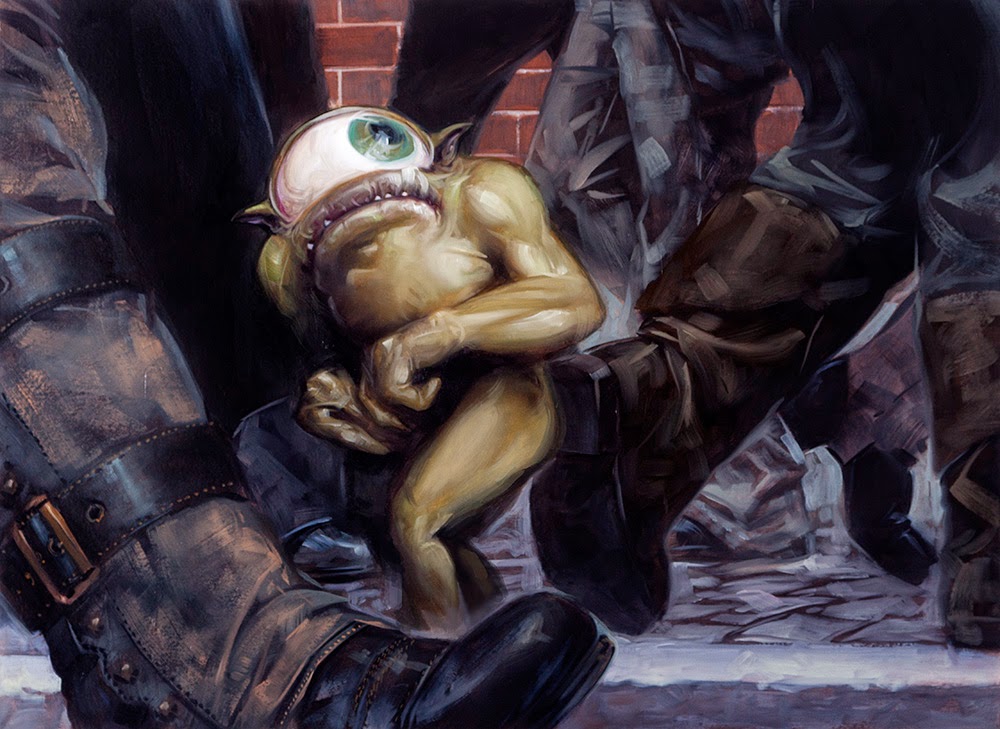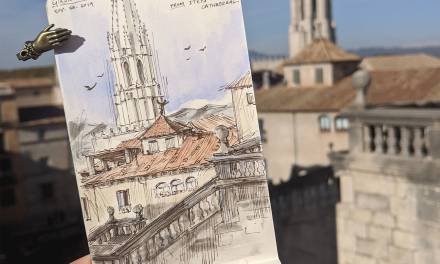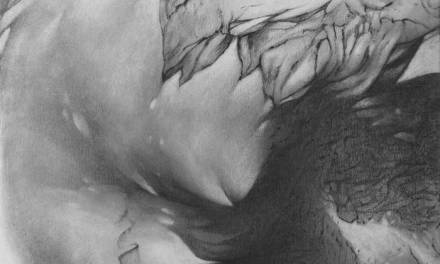“That’s just an acting challenge and that’s difficult, but that kind of – being put in a box we call that. Like, ‘put me in a box and I’ll make it work.’ you give me – you make it really difficult for me and I’ll make it work. Because that’s where you have to be really creative.”
-Bill Murray on filming Groundhog Day
David Palumbo
As artists, we generally think that we want total creative freedom. Illustrators all know the frustration of art direction which feels too constrained, rigid, or myopic. Sometimes that feeling may be justified. As I’ve said in a previous post, one of the most irritating situations an illustrator can face is being poorly matched to a job and, as a result, directed to produce work that is unnatural to their own aesthetic. With that exception aside, however, constraints of one sort or another are a standard part of the job and, with a cooperative working relationship between artist and art director, should benefit the painting rather than harm it. Most of us do best when we don’t have total creative freedom because, for most of us, total freedom probably makes us less creative.
Constraints directed by the client fall on a spectrum of rigidity and it often has more to do with the art director’s personality than the product. Looking only at the field of publishing, for example, I’ve had some clients give me a completely open field to play in where I never heard the word ‘no.’ Every sketch and final sailed through with nothing but positive feedback. At the other end are clients who sent me photo comps or reference already designed with my job simply being to render without any other creative input. Speaking personally, I am most comfortable when the client is somewhere in the middle of these.
Let’s look at the iron fisted client first. When a client begins by sending you an overly specific description of the scene, the upside is that everyone starts out on the same page. There isn’t much need for the beating-your-head-against-a-wall process of distilling themes, narrowing the concept, and the other general big picture aspects of sketch development if you already clearly know what they are after. Also, seeing that clear idea tells you right away if it is something you would be interested in and right for.
The downside to a client with an extremely specific vision is that most artists want to contribute their creativity and unique approach to visual problems (I’d argue it is the most important thing that we do) and that may not be what this client wants. In extreme cases in which the artist is essentially asked to skip the designing of the image and proceed directly to the rendering, their potential contribution is being squandered. Even in those cases, if you take the job, the key is to stay engaged. There are almost always still creative paths to explore which fit the client’s vision while also making the piece in some way personal. Even in cases where you really are being hired as just a pair of hands, you can put your ego to the side and challenge yourself as an exercise in technique.
By contrast, being given total freedom sounds extremely appealing. The problem is that having unlimited choice can paralyze you. Working without enough direction can feel like groping in the dark without knowing what you are looking for. Additionally, when the feedback is only positive reinforcement most artists will become uncomfortable at a certain point. This is what we want usually, but something is suspicious when it happens too much. It may be that you are really just nailing it, but it feels more like the client is so easy going that they might allow you to turn in something subpar and not check you on it. Speaking personally, that sort of client triggers a weird paranoia in me that causes me to get tougher on myself. I have to concentrate twice as hard and, in the end, I will build my own box to work in.
The truth is that we actually build our own boxes all the time. For everything.
Every work of art is the result of choices. It is hard to even say how many choices are made because it is a fractal concept. Zoom in past the Big choices (art form, message, general aesthetic, etc.) and there is another layer (medium, tools, subject, etc.) and more and more down to the decision that you make almost without thinking each time your brush makes a mark on your surface. Every time we make a choice, we have narrowed the potential result and therefore reinforced the box which we build around ourselves.
I’m sure if any of us look at our process, we can find evidence of this pretty easily in very concrete examples. For me, I work in oils, generally with the same palette, brush selection, and surface. I work from photo references and my reference is almost always black and white. My work follows specific sizes for specific assignments (book covers generally one size, magic cards another, etc.) Though each of these choices have been made to make my process smoother, more efficient, more enjoyable, and more consistent, they are all self-imposed restrictions which, quite honestly, will all limit me in some way or another beyond those limits provided by an assignment.
But here’s the thing: limits are good for an artist. That is why we construct them even when they don’t exist. Limits are the result of choices made and they are the motivation towards making choices which we might not otherwise have arrived at. The final sum in the long chain of choices is what makes each artist unique from all others.
Limits are necessary. Working in the box is necessary. When I create personal work, one of the first things that I do is begin building a new box to explore, push against, and hopefully find a path that leads to the unexpected. In a way it is a process of slowing down and really examining the obvious so that we can extract something much better.
Most jobs are not absolutely rigid or absolutely loose and you will have just enough constraint to make a choice: do you want to take the path clearly marked or do you want to look for a more interesting one? It can be very tempting to take the easy road, especially when on a time crunch. After all, the client is telling you what they want. Nobody will fault you for giving them what they expect to see. Looking for something more interesting which still fits the clients needs, however, is really the difference between work being exceptional or merely printable. You won’t always find it, and we all know very well that they won’t always go for it, but the push for a more creative solution when they put you in a box is what makes good artists great.







Dave, is this the blog you WANTED to write? Or just the one good enough to post?
Well said Dave. I always enjoy your articles. Do you have any examples of the sizes you like to work at for specific assignments?
Thank you, Dave, I really appreciate this one. I'm reminded of an analogy comparing limits to certain bodies of water: a river has limits, and runs clear and smooth; a swamp has no limits, and goes nowhere and becomes stagnant. If no choices are made, nothing gets done.
a question I ask myself every other week
thanks! typically my Magic cards and other small reproduction sized illustrations (spot illos, other trading cards) are about 12×16 inches. I like painting smaller for personal work, but very rarely do so for jobs. Book covers and similar sized reproductions (comic covers, magazine covers/interiors) are most often 16×24. Jobs which will print large tend to be 30x40ish